-
 Bitcoin
Bitcoin $106,731.2224
-1.05% -
 Ethereum
Ethereum $2,444.9804
-1.20% -
 Tether USDt
Tether USDt $1.0003
0.01% -
 XRP
XRP $2.1882
0.09% -
 BNB
BNB $651.1435
-0.61% -
 Solana
Solana $148.3252
-2.09% -
 USDC
USDC $1.0000
0.01% -
 TRON
TRON $0.2787
0.55% -
 Dogecoin
Dogecoin $0.1598
-3.16% -
 Cardano
Cardano $0.5520
-2.43% -
 Hyperliquid
Hyperliquid $39.0960
-2.64% -
 Bitcoin Cash
Bitcoin Cash $516.9519
2.98% -
 Sui
Sui $2.7011
-2.95% -
 Chainlink
Chainlink $13.0582
-1.71% -
 UNUS SED LEO
UNUS SED LEO $8.9250
-2.53% -
 Stellar
Stellar $0.2359
-0.18% -
 Avalanche
Avalanche $17.3856
-3.73% -
 Toncoin
Toncoin $2.8095
-3.56% -
 Shiba Inu
Shiba Inu $0.0...01121
-1.95% -
 Litecoin
Litecoin $85.2795
-0.85% -
 Hedera
Hedera $0.1471
-2.15% -
 Monero
Monero $319.8004
1.12% -
 Dai
Dai $1.0001
0.01% -
 Ethena USDe
Ethena USDe $1.0001
0.02% -
 Bitget Token
Bitget Token $4.5344
-1.07% -
 Polkadot
Polkadot $3.3224
-2.96% -
 Uniswap
Uniswap $6.9697
-2.75% -
 Aave
Aave $266.1658
-2.25% -
 Pepe
Pepe $0.0...09414
-3.41% -
 Pi
Pi $0.4913
-3.29%
Why is my Trust Wallet balance not updating?
If your Trust Wallet balance isn't updating, check for network issues, clear the app cache, or verify transactions on a blockchain explorer like BscScan or Etherscan.
Jul 01, 2025 at 08:42 pm
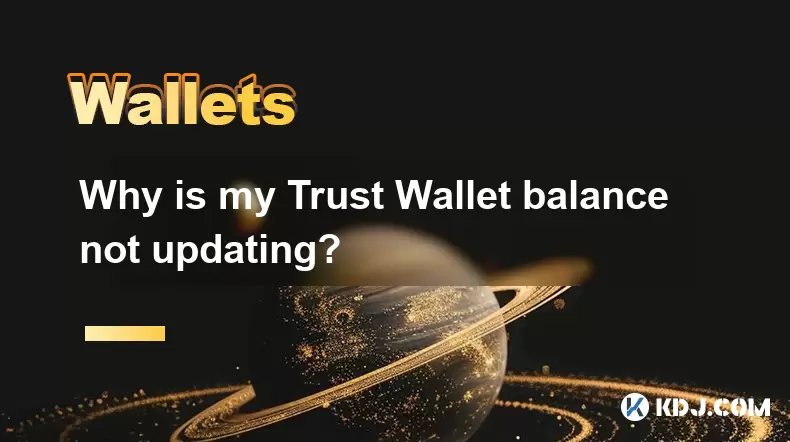
Understanding the Common Causes of Trust Wallet Balance Not Updating
If you are experiencing an issue where your Trust Wallet balance is not updating, it can be frustrating, especially if you're actively managing your crypto assets. The most common reasons behind this problem often relate to network connectivity issues, syncing problems, or incorrect settings within the wallet itself. One primary cause could be a delay in blockchain synchronization, which means that the wallet hasn't fetched the latest transaction data from the network. This might occur due to unstable internet connections or temporary server issues on the backend.
Another possible reason involves token address mismatches—especially when dealing with custom tokens or newly added blockchains. If the contract address or token symbol doesn’t match what’s expected by Trust Wallet, it may fail to display the correct balance. Additionally, cache corruption within the app can prevent real-time updates from appearing even though the funds have been successfully transferred.
Checking Network and Blockchain Status
Before diving into more complex troubleshooting steps, it's essential to verify whether there are ongoing issues with the blockchain or network you're using. Sometimes, specific networks like Binance Smart Chain (BSC), Ethereum (ETH), or Polygon (MATIC) experience congestion or downtime, which can result in delayed transaction confirmations and hence, unupdated balances.
To check this:
- Visit official status pages or community forums for the blockchain you’re interacting with.
- Use blockchain explorers such as BscScan for BSC or Etherscan for Ethereum to look up your transaction hashes and confirm whether they've been included in a block.
- Ensure that the network selected in Trust Wallet matches the one used for the transaction.
If everything seems normal on the blockchain side, proceed to the next step.
Refreshing Your Trust Wallet Interface
A simple but effective solution is to manually refresh your Trust Wallet interface. In some cases, the app may not auto-refresh its data, especially if it was running in the background for a long time.
Try the following:
- Close the Trust Wallet app completely from your device’s recent apps list.
- Reopen the app and navigate to the relevant wallet address.
- Wait for a few moments to allow the app to fetch updated blockchain data.
Alternatively, you can switch to another wallet address within Trust Wallet and then return to the original one. This action sometimes forces the app to reload balance information.
Clearing Cache and Data on Mobile Devices
Cache-related issues are among the top causes of outdated balance displays in mobile wallets. Over time, corrupted or outdated cache files can interfere with how Trust Wallet retrieves and presents data.
For Android users:
- Go to Settings > Apps > Trust Wallet > Storage.
- Tap on Clear Cache and then Clear Data.
- Reopen the app and restore your wallet using the recovery phrase if necessary.
For iOS users:
- Unfortunately, iOS does not provide a direct way to clear app cache without deleting the app.
- Uninstall Trust Wallet from your device.
- Reinstall it from the App Store and restore your wallet using your seed phrase.
After completing these steps, check if the balance updates correctly.
Verifying Transaction Details via Blockchain Explorer
If the balance still isn't updating, it's crucial to verify the transaction details directly on a blockchain explorer. This helps determine whether the issue lies with the wallet or the actual transaction.
Steps to do this:
- Locate the transaction hash from wherever you sent or received the funds.
- Copy the hash and paste it into the search bar of the appropriate explorer (e.g., BscScan.com, Etherscan.io).
- Check if the transaction has enough confirmations and if it was successfully processed.
- Confirm that the receiving address matches exactly the one shown in your Trust Wallet.
If the transaction appears valid and confirmed on the explorer but still doesn’t reflect in Trust Wallet, the issue likely resides within the wallet configuration or sync mechanism.
Re-importing the Wallet or Adding Custom Tokens
In some cases, especially after restoring a wallet or adding new tokens, Trust Wallet might not properly recognize certain balances. To resolve this:
- Export your wallet using the Private Key or Recovery Phrase.
- Delete the current wallet from Trust Wallet.
- Re-import it using the same recovery method.
If you're dealing with a custom token, ensure that all parameters (contract address, symbol, decimals) are entered correctly. Even a small typo can lead to a failure in recognizing the token balance.
Frequently Asked Questions
Why does my Trust Wallet show zero balance even after receiving tokens?
This typically occurs when the token hasn’t been added correctly to your wallet or the transaction hasn’t been fully confirmed on the blockchain. Always double-check the transaction on a blockchain explorer and ensure that the token details are accurate in your wallet.
Can I use Trust Wallet without an internet connection?
No, Trust Wallet requires an active internet connection to fetch blockchain data and update balances. Without connectivity, it cannot synchronize with the network and will display outdated or no balance at all.
Is it safe to clear data on Trust Wallet?
Yes, clearing data only removes cached information and local preferences. As long as you have your recovery phrase or private key saved securely, your funds remain safe and can be restored easily.
What should I do if my balance doesn’t update after reinstalling Trust Wallet?
Ensure that you're restoring the correct wallet and that the recovery phrase or private key is accurate. Also, check if the network settings are configured correctly and try using a different Wi-Fi or mobile data connection to rule out ISP-related issues.
Disclaimer:info@kdj.com
The information provided is not trading advice. kdj.com does not assume any responsibility for any investments made based on the information provided in this article. Cryptocurrencies are highly volatile and it is highly recommended that you invest with caution after thorough research!
If you believe that the content used on this website infringes your copyright, please contact us immediately (info@kdj.com) and we will delete it promptly.
- Powell, Stablecoin Regulation, and Circle's Bold Move: A New York Minute on Crypto's Future
- 2025-07-02 02:30:12
- Ethereum Price, Tom Lee, and Bitcoin: A New Era for Crypto?
- 2025-07-02 02:30:12
- Hoskinson, Ripple, Cardano DeFi: A New Era of Collaboration?
- 2025-07-02 02:35:12
- BlockDAG, ALGO, and the Crypto Trends Shaping 2025
- 2025-07-02 01:50:12
- Cold Wallet, Token, Gains: Is CWT the Smartest Crypto Move?
- 2025-07-02 01:10:12
- Pi Coin's Rocky Ride: Support Levels, Recovery Timeline, and What the Experts Are Saying
- 2025-07-02 01:10:12
Related knowledge
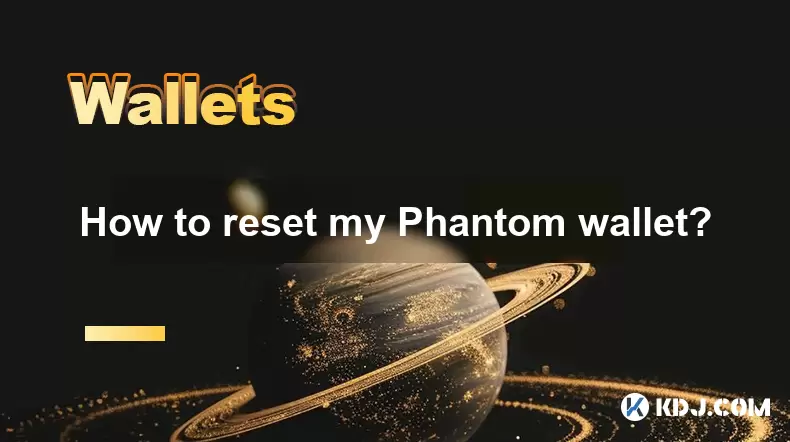
How to reset my Phantom wallet?
Jul 02,2025 at 12:36am
Understanding the Need for Resetting Your Phantom WalletIf you're using a Phantom wallet, you may encounter situations where resetting your wallet becomes necessary. This could be due to forgotten passwords, seed phrase issues, or account corruption. Phantom is a non-custodial wallet primarily used for interacting with the Solana blockchain, and it stor...
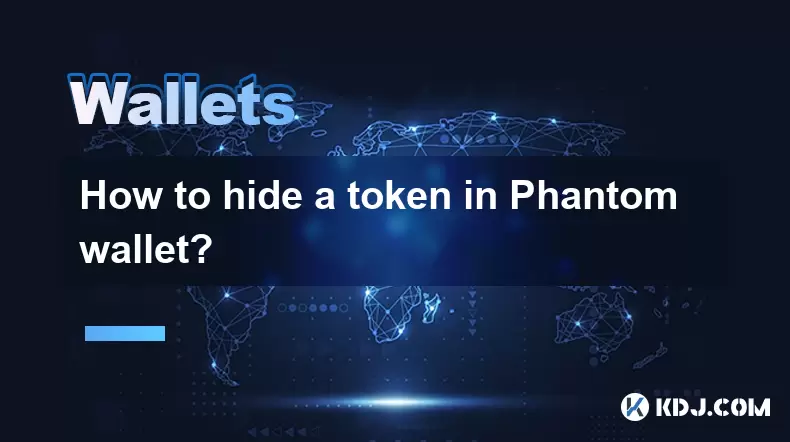
How to hide a token in Phantom wallet?
Jul 01,2025 at 05:49pm
Understanding the Phantom Wallet InterfacePhantom wallet is a popular non-custodial wallet used primarily for interacting with the Solana blockchain. It allows users to store, send, receive, and manage various tokens, including both fungible and non-fungible tokens (NFTs). Before attempting to hide a token, it's essential to understand how the wallet in...
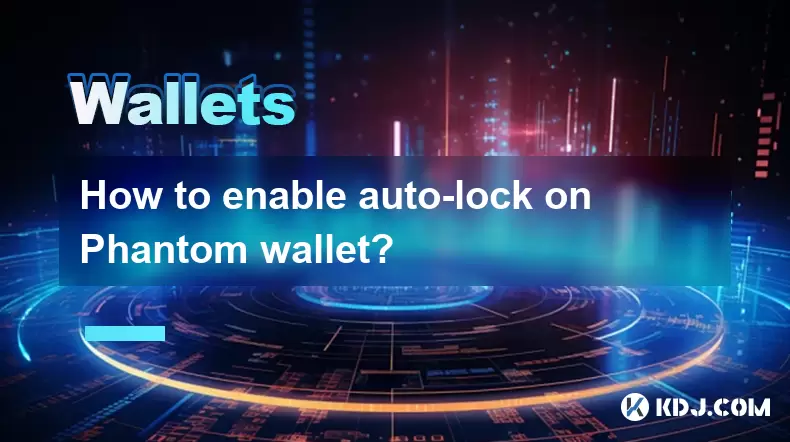
How to enable auto-lock on Phantom wallet?
Jul 01,2025 at 04:01pm
What is Auto-Lock in Phantom Wallet?Phantom wallet is a popular non-custodial cryptocurrency wallet used primarily for interacting with the Solana blockchain. One of its security features includes the ability to set an auto-lock timer, which ensures that the wallet locks itself automatically after a period of inactivity. Auto-lock enhances security by p...
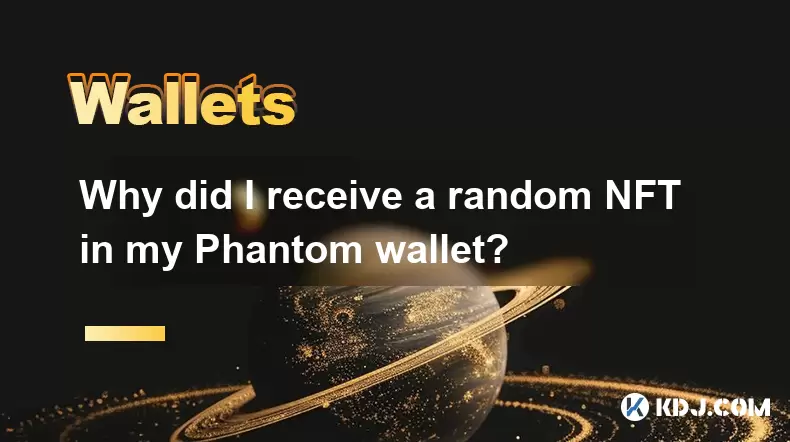
Why did I receive a random NFT in my Phantom wallet?
Jul 01,2025 at 09:00pm
Receiving an Unexpected NFT in Your Phantom WalletIf you've recently opened your Phantom wallet and noticed an unfamiliar NFT appearing in your collection, you're not alone. Many users have reported receiving random or unsolicited non-fungible tokens, often without any prior interaction with the project or sender. This phenomenon has become increasingly...
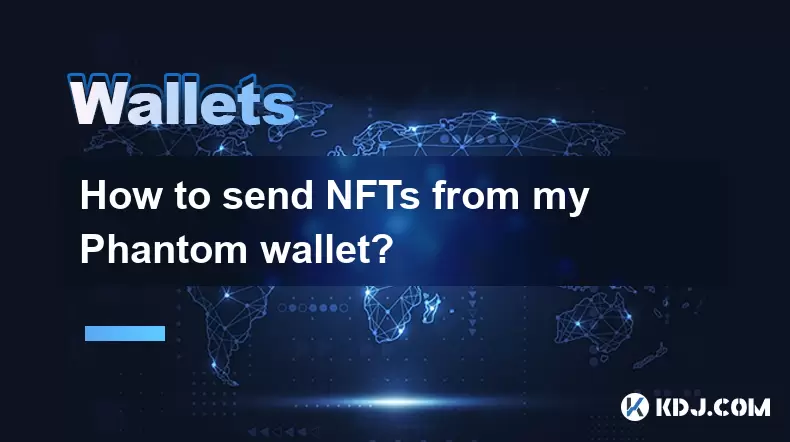
How to send NFTs from my Phantom wallet?
Jul 02,2025 at 03:15am
What is Phantom Wallet and Why Use It for NFT Transfers?Phantom wallet is a non-custodial cryptocurrency wallet primarily used for interacting with the Solana blockchain. It supports both tokens and NFTs, making it a popular choice among users who engage in decentralized finance (DeFi) or digital collectibles. The interface is user-friendly, allowing ev...
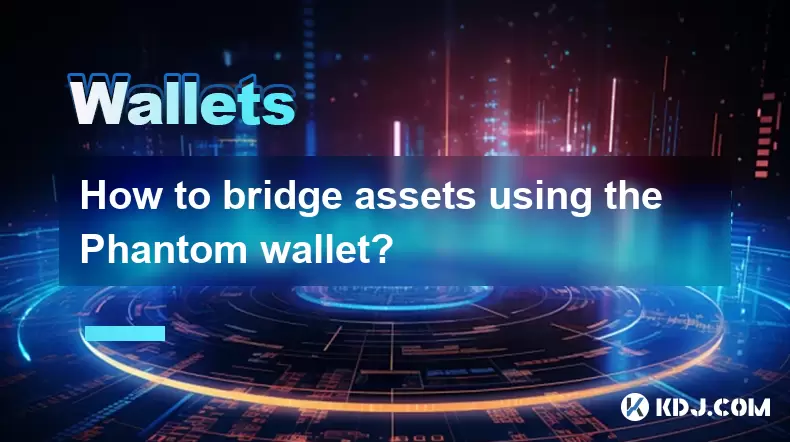
How to bridge assets using the Phantom wallet?
Jul 02,2025 at 02:50am
Understanding the Basics of Asset BridgingAsset bridging refers to the process of transferring digital assets from one blockchain network to another. This functionality is crucial in a multi-chain ecosystem where users may need to move tokens between different networks for various purposes, such as accessing decentralized applications (dApps), participa...

How to reset my Phantom wallet?
Jul 02,2025 at 12:36am
Understanding the Need for Resetting Your Phantom WalletIf you're using a Phantom wallet, you may encounter situations where resetting your wallet becomes necessary. This could be due to forgotten passwords, seed phrase issues, or account corruption. Phantom is a non-custodial wallet primarily used for interacting with the Solana blockchain, and it stor...

How to hide a token in Phantom wallet?
Jul 01,2025 at 05:49pm
Understanding the Phantom Wallet InterfacePhantom wallet is a popular non-custodial wallet used primarily for interacting with the Solana blockchain. It allows users to store, send, receive, and manage various tokens, including both fungible and non-fungible tokens (NFTs). Before attempting to hide a token, it's essential to understand how the wallet in...

How to enable auto-lock on Phantom wallet?
Jul 01,2025 at 04:01pm
What is Auto-Lock in Phantom Wallet?Phantom wallet is a popular non-custodial cryptocurrency wallet used primarily for interacting with the Solana blockchain. One of its security features includes the ability to set an auto-lock timer, which ensures that the wallet locks itself automatically after a period of inactivity. Auto-lock enhances security by p...

Why did I receive a random NFT in my Phantom wallet?
Jul 01,2025 at 09:00pm
Receiving an Unexpected NFT in Your Phantom WalletIf you've recently opened your Phantom wallet and noticed an unfamiliar NFT appearing in your collection, you're not alone. Many users have reported receiving random or unsolicited non-fungible tokens, often without any prior interaction with the project or sender. This phenomenon has become increasingly...

How to send NFTs from my Phantom wallet?
Jul 02,2025 at 03:15am
What is Phantom Wallet and Why Use It for NFT Transfers?Phantom wallet is a non-custodial cryptocurrency wallet primarily used for interacting with the Solana blockchain. It supports both tokens and NFTs, making it a popular choice among users who engage in decentralized finance (DeFi) or digital collectibles. The interface is user-friendly, allowing ev...

How to bridge assets using the Phantom wallet?
Jul 02,2025 at 02:50am
Understanding the Basics of Asset BridgingAsset bridging refers to the process of transferring digital assets from one blockchain network to another. This functionality is crucial in a multi-chain ecosystem where users may need to move tokens between different networks for various purposes, such as accessing decentralized applications (dApps), participa...
See all articles

























































































